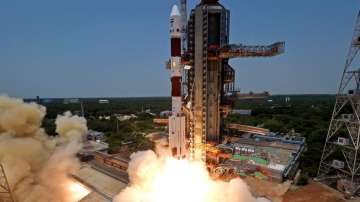The Indian Space Research Organisation (ISRO) has achieved a remarkable milestone in solar research with its Aditya-L1 mission, en route to Lagrange Point 1 (L1). Onboard the Aditya-L1 spacecraft is the High Energy L1 Orbiting X-ray Spectrometer (HEL1OS), one of seven payloads. HEL1OS recently marked a significant achievement by successfully recording the impulsive phase of solar flares during its first observation period on October 29, 2023. Solar flares are intense bursts of energy and radiation originating from the sun, primarily emitting X-rays and ultraviolet light. They occur due to the release of magnetic energy stored in the sun's atmosphere.
The HEL1OS instrument, developed by the Space Astronomy Group of the UR Rao Satellite Centre, ISRO, Bengaluru, is specifically designed to monitor high-energy X-ray activity from the Sun.
During its ten-hour first observation period, HEL1OS captured data consistent with X-ray light curves provided by the National Oceanic and Atmospheric Administration's Geostationary Operational Environmental Satellites (NOAA's GOES).
This accomplishment is a substantial step forward in India's ability to study explosive energy release and electron acceleration during the impulsive phases of solar flares.
Commissioned on October 27, 2023, HEL1OS is currently undergoing calibration operations and fine-tuning of thresholds. Once fully operational, it will provide invaluable insights into the generation and evolution of solar flares, deepening our understanding of the sun's complex processes.
The Aditya-L1 mission exemplifies India's increasing expertise in space research. It is the nation's first space-based observatory-class solar mission, with all seven payloads developed domestically.
Moreover, the mission underscores the collaborative efforts of ISRO and various Indian academic institutes in advancing our knowledge of the sun and its effects on Earth.
As the mission continues its journey, the scientific community eagerly anticipates further data from HEL1OS and other Aditya-L1 payloads. These findings will not only enhance our comprehension of the Sun but also aid in predicting geomagnetic storms and understanding space weather dynamics, ultimately contributing to the safety and efficiency of space travel and satellite operations.
Also read | NASA's Hubble space telescope captures mesmerising images of Jupiter
